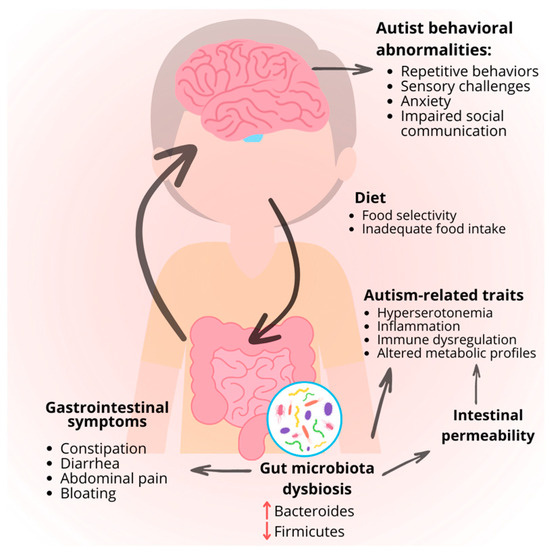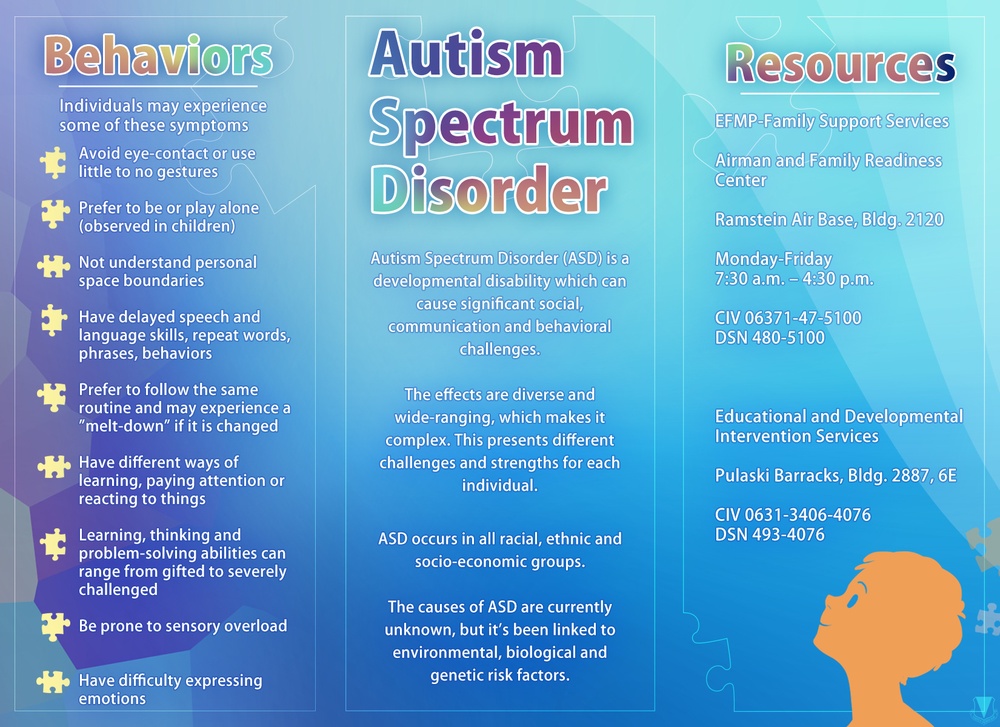Using Autism Behavioral Therapy, caregivers can unlock independence in daily routines
Using Autism Behavioral Therapy, caregivers can unlock independence in daily routines
Blog Article
Comprehending the Impact of Behavioral Autism on Daily Life and Social Interactions
You may not realize exactly how deeply behavior autism influences daily life and social interactions. People on the spectrum typically browse a globe full of communication obstacles and sensory overload. These difficulties can lead to irritation and seclusion, influencing their partnerships and general health. Understanding these nuances is vital for cultivating encouraging environments. What strategies can we implement to create more inclusive areas and meaningful links? The solutions could shock you.
Defining Behavior Autism and Its Features
Behavior autism, usually described as autism range problem (ASD), encompasses a variety of conditions identified by difficulties in social communication, communication, and repetitive actions. You may observe that individuals with ASD typically have a hard time to interpret social hints, which can result in misunderstandings in discussions. They might find it hard to develop eye get in touch with or take part in small talk, making social situations really feel overwhelming.
Interaction troubles can manifest in various means, from postponed speech development to a preference for making use of fewer words. Repetitive habits, such as hand-flapping or rocking, can act as coping systems to take care of anxiety or sensory overload. These features can profoundly affect daily life, making it crucial for you to recognize and support those with ASD. By identifying these characteristics, you can foster a setting that promotes acceptance and urges efficient communication, aiding individuals with autism prosper in their everyday communications.
The Range of Autism: Comprehending Irregularity in Behavior
Autism spectrum problem (ASD) isn't a one-size-fits-all medical diagnosis; it varies widely amongst people. You could see that some people with ASD display moderate signs and symptoms, while others might deal with extra significant difficulties. This irregularity can show up in habits, interests, and sensory level of sensitivities. You may come across people that are very verbal and involve easily in conversations, while others might choose solitary activities or interact non-verbally.
Furthermore, the way people with ASD react to sensory input can vary significantly; some may be overwhelmed by loud noises or bright lights, whereas others grow in stimulating settings. The range also includes differences in social communications; some individuals may battle to analyze social cues, while others navigate social settings with relative ease. Understanding this irregularity is necessary, as it assists you value each individual's special experience and tailor assistance to their particular needs, fostering an extra inclusive setting for everyone.
Interaction Difficulties Encountered by People With Autism
When you connect with individuals on the autism range, you might notice their distinct communication challenges. They often deal with problems with both nonverbal and spoken signs, which can influence their social communications. Understanding these barriers is necessary for fostering far better connections and support.

Verbal Interaction Troubles
Many individuals on the autism spectrum experience spoken interaction troubles that can considerably affect their daily interactions. Your speed, tone, or quantity may not straighten with social assumptions, causing others to misinterpret your objectives. Recognizing these obstacles can aid you and your support network create methods to enhance interaction and cultivate much better connections with others in your everyday life.
Nonverbal Interaction Obstacles
Spoken communication isn't the only difficulty people on the autism spectrum face; nonverbal communication obstacles can be just as significant. You might discover it tough to analyze body movement, faces, and eye call, which are crucial for efficient interaction. These challenges can result in misunderstandings or misinterpretations of social hints, making interactions really feel confusing or frustrating. You may battle to share your very own emotions via nonverbal ways, leaving others not sure of your intents or sensations. This detach can produce feelings of seclusion and aggravation. Acknowledging these obstacles is vital for cultivating understanding and empathy in your communications. By resolving nonverbal communication, you can discover approaches to enhance your social experiences and boost your total high quality of life.
Social Communication Effects
Social communications can often really feel overwhelming due to the distinct interaction difficulties faced by individuals with autism. Identifying these obstacles can aid you find methods to enhance interaction, such as exercising social abilities in secure setups or using aesthetic help. Recognizing your requirements allows you to browse social interactions with greater self-confidence and simplicity.
Social Interaction and Relationship Structure in Autism
While structure connections can be challenging for individuals with autism, understanding their distinct point of views and communication styles can foster significant connections. You might discover that many people on the range favor straight communication and may have problem with social signs or tiny talk. By being simple in your communications, you can aid create an environment where they feel comfy.
Take the time to listen and observe just how they reveal themselves. This insight can assist you in steering conversations better. Participating in shared passions can additionally act as a bridge to much deeper connections. Whether it's a leisure activity, a favorite program, or a shared passion, these usual strings can open up doors to relationship.
Daily Life Regimen: Browsing Obstacles and Methods
Navigating everyday life regimens can be especially challenging for individuals with autism, especially when unforeseen changes happen. To navigate these challenges, consider applying visual routines or checklists.
Establishing a routine that includes sensory breaks can likewise be helpful. This helps create an understanding environment.
Finally, practice mindfulness strategies to handle anxiety and stress and anxiety. Simple breathing exercises or grounding techniques can make a substantial difference. By including these approaches, you can improve your everyday routine and reduce get more info disturbances, making life really feel a lot more manageable.
Strengths and Capabilities of People on the Autism Spectrum
Understanding day-to-day life routines is simply one facet of the autism experience. Many people on the autism spectrum possess remarkable strengths and capacities that set them apart.
Furthermore, your memory abilities frequently beam, especially in locations of interest. Autism Therapist. This propensity for keeping details can make you a valuable resource in areas like art, science, or innovation. You may also exhibit solid aesthetic reasoning, enabling you to visualize intricate ideas and solve problems creatively
Additionally, your special viewpoint on the world can foster empathy and understanding in others, improving social communications. Welcoming these strengths not only improves your confidence however additionally assists others value the varied skills you bring to the table.
Producing Inclusive Atmospheres for People With Autism
Creating inclusive atmospheres for individuals with autism starts with creating sensory-friendly rooms that accommodate their special demands. You can likewise promote opportunities for social communication, helping to construct links and friendships. By making these changes, you'll add to a much more welcoming ambience for everyone.
Designing Sensory-Friendly Spaces
While designing sensory-friendly spaces, it's important to show on the one-of-a-kind demands of individuals with autism. Integrate peaceful areas where individuals can charge and retreat when bewildered. Include visual schedules or clear signs to aid people navigate the space confidently.
Advertising Social Communication Opportunities
Designing sensory-friendly areas not only addresses private comfort but additionally click here establishes the phase for meaningful social communications amongst individuals with autism. To promote these communications, create comprehensive atmospheres that welcome participation. Arrange structured activities, like art courses or group video games, that encourage collaboration without frustrating sensory input. Usage aesthetic aids and clear communication to aid every person engage easily. Encourage peer mentoring, combining people with autism with helpful peers that can assist them with social scenarios. Furthermore, take into consideration organizing routine area events that commemorate neurodiversity, cultivating acceptance and understanding amongst all participants. By executing these techniques, you can enhance social opportunities, helping individuals with autism construct friendships and enhance their social skills in a secure, inviting environment.

Frequently Asked Inquiries
How Can Buddies Support A Person With Behavioral Autism?
You can support a buddy with behavioral autism by being individual, paying attention proactively, and respecting their boundaries. Engage in activities they enjoy, interact honestly, and develop a comfy environment where they really feel valued and understood.
What Resources Are Available for Moms And Dads of Kid With Autism?
You can check out numerous sources for moms and dads of kids with autism, including support system, academic web sites, and local area solutions. Linking with other moms and dads can likewise give important understandings and shared experiences to aid browse obstacles.
Can Behavioral Autism Adjustment In Time?

Yes, behavioral autism can change with time. You may discover shifts in interaction, social abilities, and behavior as your kid expands. Early intervention and assistance often play essential duties in these developing modifications.
Just How Do Sensory Level Of Sensitivities Affect Life?
Sensory sensitivities can make daily experiences frustrating. You could battle with brilliant lights or loud noises, leading to tension or evasion. Locating environments that accommodate your demands can substantially improve your website comfort and total every day life.
What Are Common Misconceptions Regarding Behavioral Autism?
You could assume behavior autism just influences interaction abilities, however it's more complicated. Many presume individuals do not have empathy or knowledge, which isn't real. Understanding these misunderstandings aids foster approval and support for those on the range.
Behavior autism, often referred to as autism range problem (ASD), encompasses a variety of problems defined by difficulties in social interaction, interaction, and repetitive habits.Social communications can frequently really feel frustrating due to the unique communication obstacles encountered by individuals with autism.Creating sensory-friendly rooms not only addresses individual convenience but also sets the phase for purposeful social interactions amongst individuals with autism. Encourage peer mentoring, pairing people with autism with supportive peers who can direct them with social scenarios. By applying these techniques, you can improve social chances, helping individuals with autism construct relationships and enhance their social abilities in a risk-free, welcoming atmosphere.
Report this page